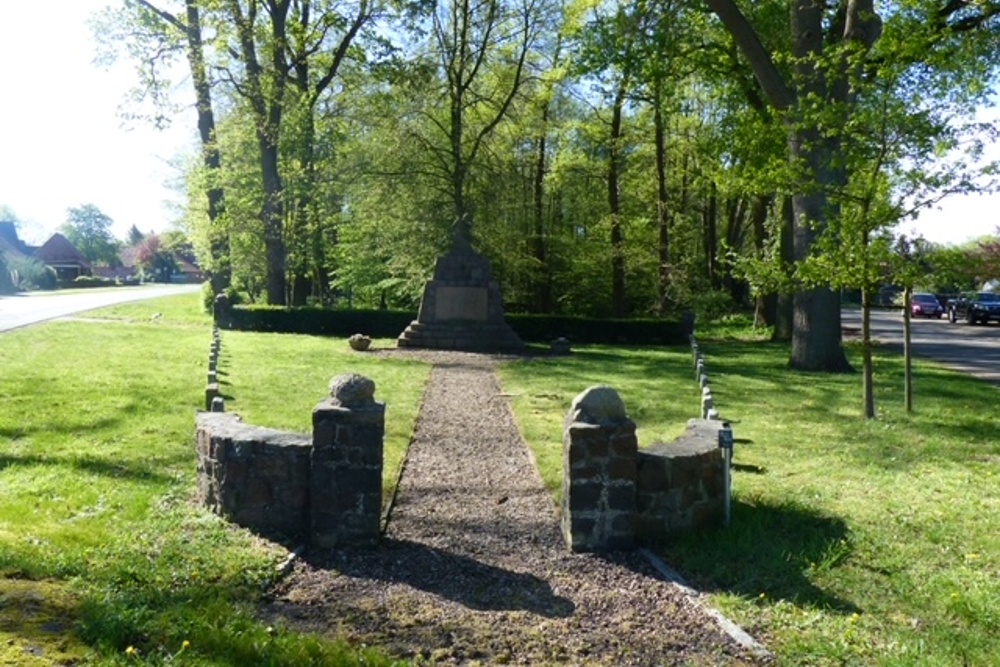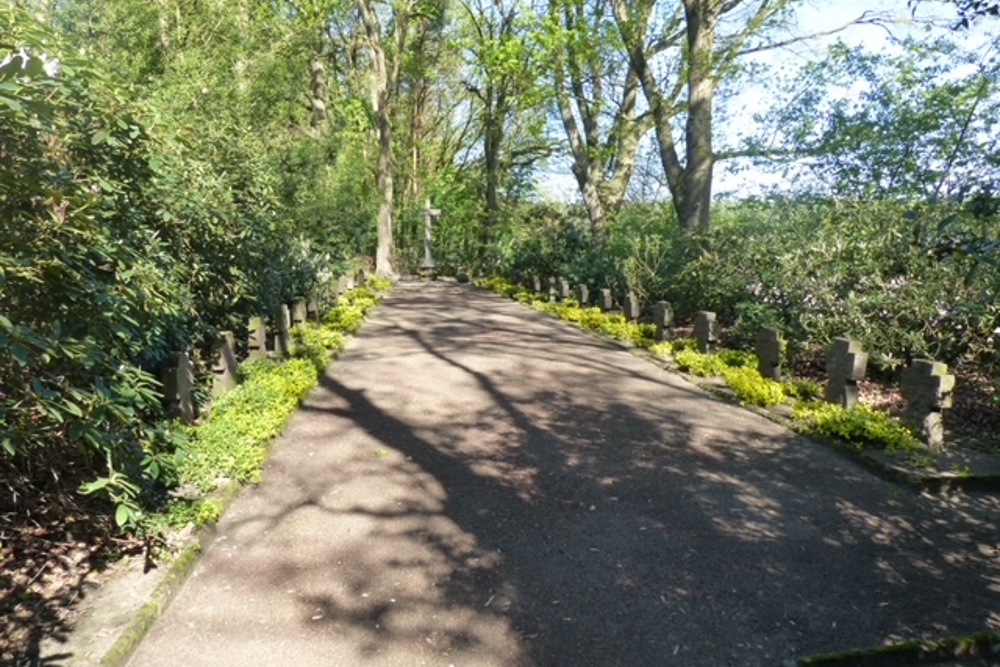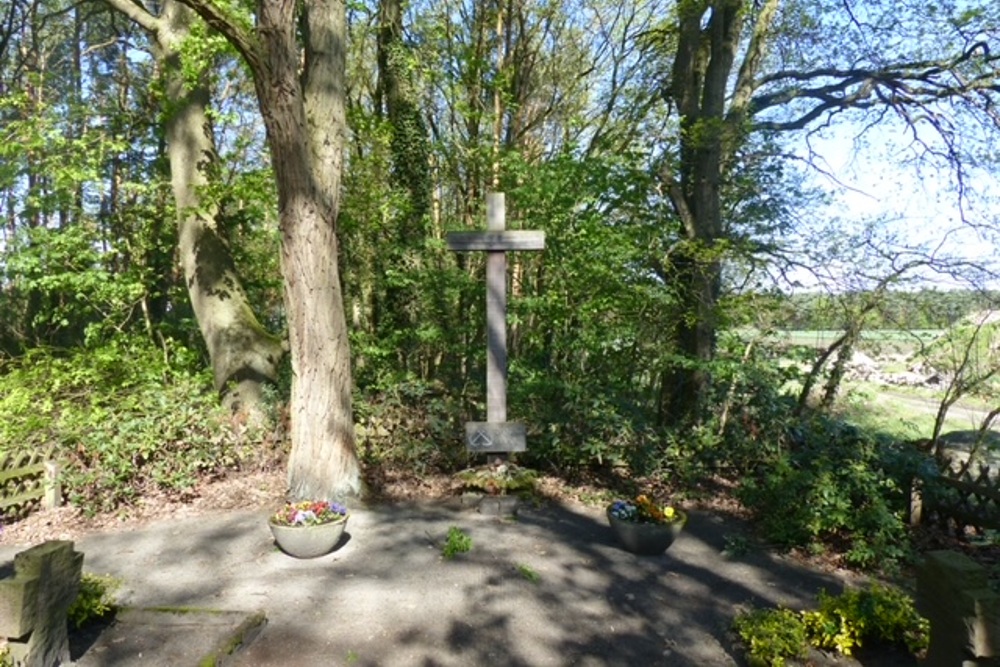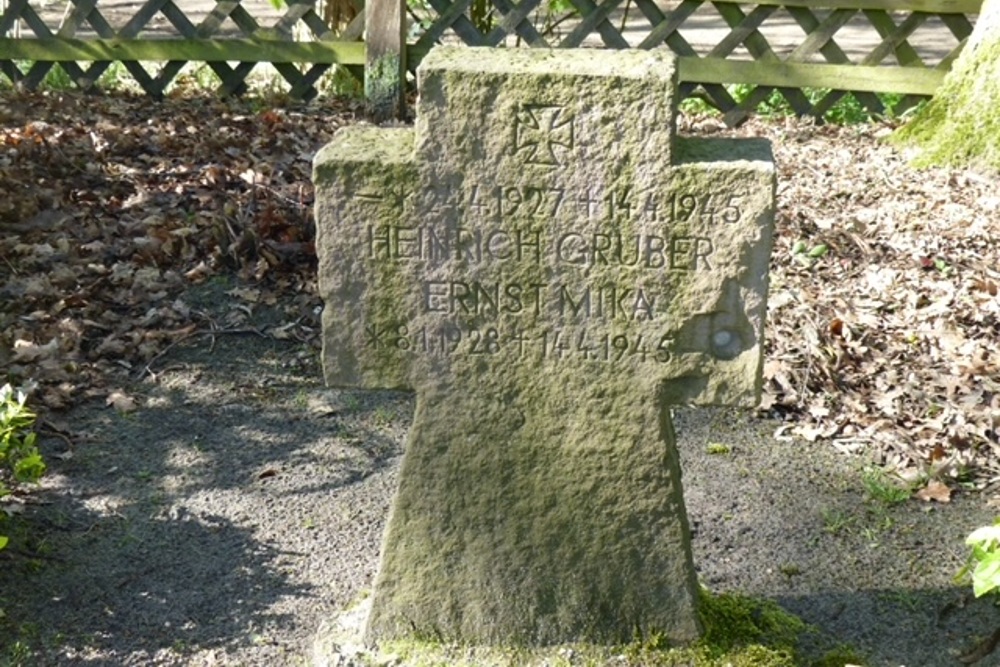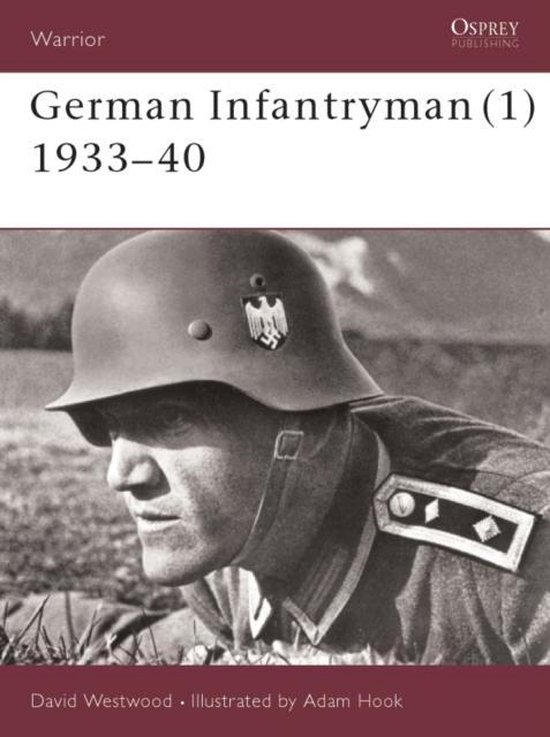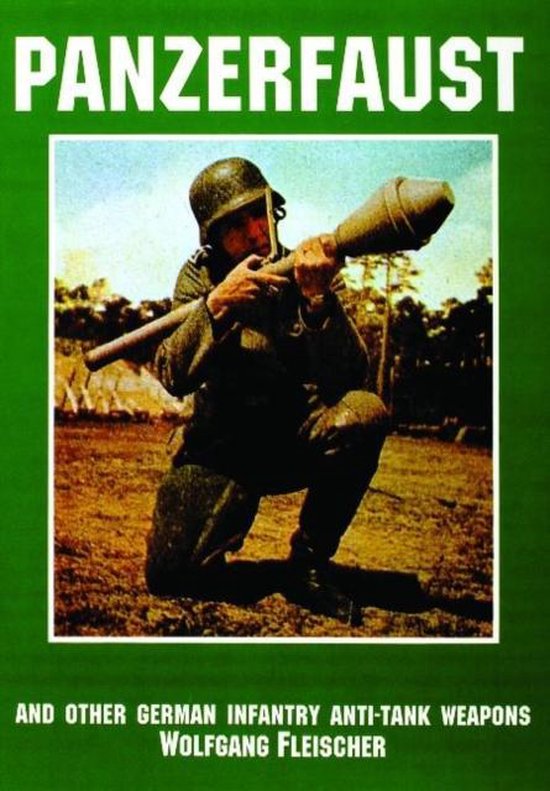German War Cemetery Groß Häuslingen
The cemetery contains the graves of 59 soldiers of the 6th Marine Grenadier Regiment of the 2nd Marine Infantry Division killed in the fighting for the villages of Klein Häuslingen and Groß Häuslingen on 12th, 13th and 14th April 1945. The cemetery was laid out between 1945 and 1946 as a place of burial or reburial for those killed in the Häuslingen battles.
The men buried here came from the 1st Bataillon of the Regiment, under the command of Korvettenkapitän Herbert Melzer. The Division had only formed in February 1945 from surplus or redundant naval personal (Marine is meant in the German sense of naval forces, rather than the Allied sense of an elite assault force), indicated by the fact that of the 59 men buried here 27 had the basic naval rank of Matrose (sailor). As with the 2nd Marine Division as a whole, the 1st Battalion had little training and no experience in land warfare by the time they were deployed in April to defend the Aller river. They were at least well equipped and highly motivated, but had no artillery or armoured support and were dependent on the panzerfaust as their primary antitank and assault weapon.
The battles for the Häuslingens began when the British 53rd Welsh Division crossed the River Aller near the village of Ortersen on 12 April and advanced south down the L159, meeting the 2nd Kompanie of the bataillon defending the village of Klein Häuslingen. The attack was lead by the Oxfordshire and Buckinghamshire Light Infantry who quickly drove the Germans from the village, with the 2nd Kompanie losing 8 men in the fighting. The survivors then fell back to join the 4th Kompanie at Groß Häuslingen and the two companies established a strong defence, repelling two Allied attacks and using the cover of surrounding woods to launch strong counterattacks. However the British then moved around the village and launched an attack from the railway embankment from the north, outflanking and finally eliminating the German positions on the 13th. A strong German counterattack to recapture the village was driven back on the 14th.
The cemetery stands in a small wood on raised ground on the north side of the village. It consists of two rows of 15 sandstone crosses with a central gravel path. The graves were originally marked by a wooden cross for each individual burial until these were later replaced by more permanent stone markers. Each of the crosses, apart from one, marks a pair of burials. The names, dates of birth and dates of death are recorded except for 9 unknown soldiers. Of the 50 identified soldiers buried here 36 were teenagers (20 were aged 17, 6 aged 18 and 10 aged 19). Kaptain Melzer is buried in Grave 1.
At the end of the path stands a large wooden cross. At its base is a wooden plaque with the crossed anchors of the Marine Division badge and the words ‘12-13 April 1945’. The majority of those buried here are listed as killed on 14 April as there was some uncertainty over when soldiers were killed, caused by the confused nature of the fighting.
Do you have more information about this location? Inform us!
Source
- Text: Andrew Pegler
- Photos: Andrew Pegler
